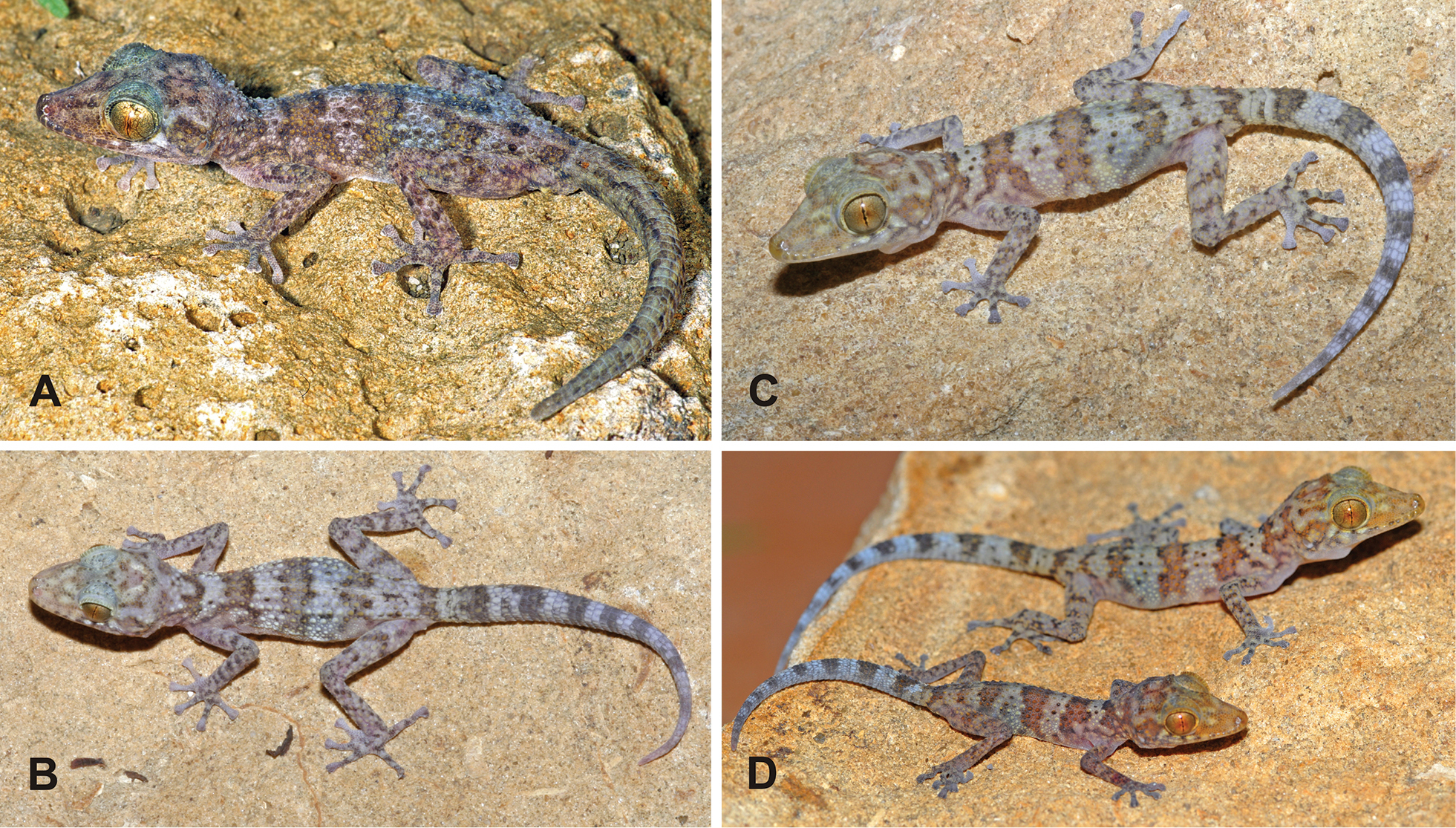A new species of nocturnal gecko (Paroedura) from karstic limestone in northern Madagascar

Paroedura hordiesi: (A) Maschio adulto; (B) Femmina adulta; (C) Subadulto; (D) Giovani.
Abstract
Paroedura hordiesi sp. n. is described from Montagne des Français, a karstic limestone massif in the far north of Madagascar recently established as nature reserve. The new species has the nostril in contact with the rostral scale and shares many characters with P. karstophila and especially with P. homalorhina which are also restricted to karstic habitats.
Paroedura hordiesi differs from P. karstophila by a smoother skin on dorsum and legs, by original and regenerated tails being both entirely smooth, by colouration, and by larger snout-vent length. Morphologically the new species is most similar to P. homalorhina from the Ankarana reserve from which it can be distinguished by shorter limbs and a less slender habitus.
Published molecular data place the new species as close relative of P. homalorhina and another undescribed species from Nosy Hara Island, while newly determined data of the cox1 gene for P. karstophila confirm the distinctness of the new species from this taxon.
Integrating the information from published and novel molecular data, the new species differs from all nominal Paroedura (except P. vahiny for which no molecular data are available to date) by strong genetic divergences.
P. hordiesi might be another microendemic species of the Montagne des Français region. We suggest its IUCN Red List classification as “Critically Endangered” on the basis that it has an extent of occurrence of at most 50 km², it is known from a single location, and there is a continuing decline in the extent and quality of its habitat.
Descritta una nuova specie di Paroedura, P. hordiesi è stata rinvenuta e descritta dalle Montagne de Français, un massiccio carsico calcareo reso recentemente riserva naturale all'estremo Nord del Madagascar.
La nuova specie ha le narici a contatto con la squama del rostro e condivide molte caratteristiche fenotipiche con le specie P. karstophila e soprattutto con P. homalorhina anche esse tipiche di habitat carsici.
Paroedura hordiesi differisce da P. karstophila per le maggiori dimensioni muso-ventre, per la pelle più liscia sul dorso e sulle zampe e inoltre per la coda che è totalmente liscia e monocromatica, sia originale che rigenerata.
La nuova specie è molto simile morfologicamente a P. homalorhina della riserva do Ankarana e può esser distinta per gli arti inferiori più corti e un habitus meno slanciato.
Analisi molecolari affermano che la nuova specie è stretta parente delle specie P. homalorhina e ad un altra non ancora descritta di Nosy Hara Island, mentre i nuovi dati confermano la distinzione della nuova specie da questo taxon per gene cox1 di P. kardtophila.
Integrando le informazioni dei dati molecolari pubblicati e quelli nuovi, la nuova specie si differenzia da tutte le Paroedura (tranne P. vahiny per i quali non sono disponibili dati molecolari fino ad oggi) da forti divergenze genetiche.
P. hordiesi potrebbe essere un'altra specie microendemica della regione delle Montagne des Français. Suggeriamo l'inserimento in IUCN Red List classification come “Critically Endangered” sulla base della sua distribuzione che all'occorrenza è di un massimo di 50 km², la specie è nota solo in una singola localitá ed il numero di esemplari è in continuo declino a cause della diminuzione e della qualitá del suo habitat.